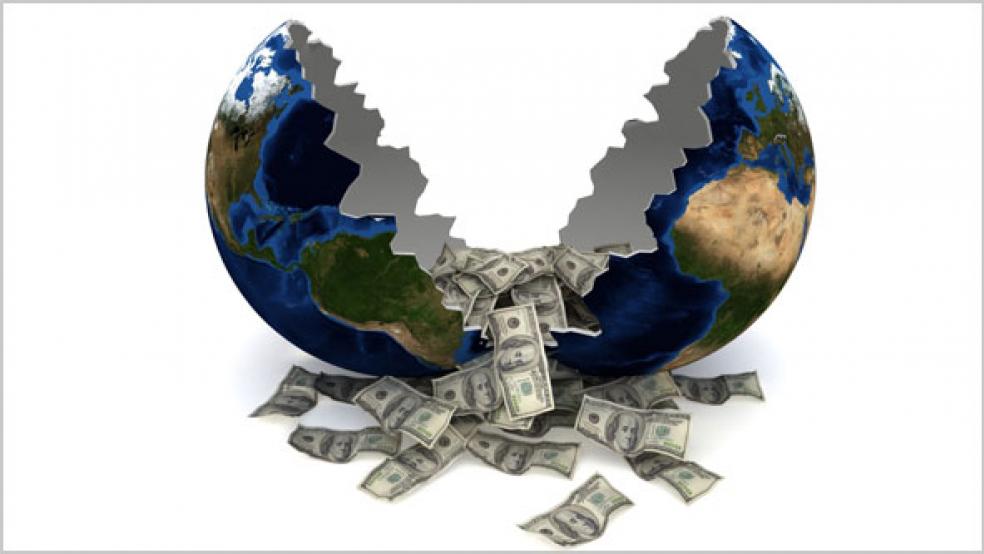Emerging market stocks fell 6.6 percent in January, their worst start to a year since 2009. Equity funds investing in those countries just suffered their worst weekly outflows since August 2011. Turmoil has taken hold everywhere from Argentina to Turkey.
What we’re witnessing today in emerging markets has drawn comparisons to the back-to-back shocks seen in 1997 as countries like Thailand, South Korea, Indonesia and then, later, Russia, struggled to deal with debt crises. Fears of contagion are spreading again.
In some ways, it’s different this time. In 1997, the problem was clear: Debt in countries like Thailand and Indonesia was largely dollar denominated, and ratios of foreign debt to GDP rose to unsustainably high levels. This time around, each country is wrestling with its own individual problems. These days, they are able to issue debt in their own currencies, so they don’t have to worry about that particular risk. But in a number of nations, governance woes and corruption have combined with economic policy problems (such as those in China, most dramatically of all), to create the potential for the kind of maelstrom that we’re now witnessing.
Despite those differences, the role of the Federal Reserve is eerily similar. In the mid-1990s, the Fed (under Alan Greenspan) began raising interest rates to help fend off inflationary pressures. Hot money – investors in search of rapid returns, and ready to move at a millisecond’s notice around the world to capture extra yield – rapidly abandoned the emerging markets and zoomed off to the United States.
The Fed has again been taking heat for the recent drama. A case in point: The governor of the central bank of India, Raghuram Rajan, took to the airwaves recently to blast the Fed’s most recent step in tapering off its support for bond markets. “International monetary cooperation has broken down,” Rajan told a Bloomberg television reporter, adding that the Fed can’t wash its hands of emerging markets now, especially after they helped pull the global economy out of its post-2008 slump.
Related: How Emerging Markets Will Determine Ben Bernanke's Legacy
Of course, it’s not just the Fed’s fault. U.S. central bankers had to do what they believed was best for the U.S. economy and job market. They shouldn’t bear the blame for the fact that many of these emerging markets have welcomed hot money with open arms in recent years. Some have done a poor job at reining in inflation, limiting current account deficits and fiscal deficits.
At a very basic level, emerging economies have been able to sustain easy money policies far longer than they should have. Rates in many economies (including Rajan’s own India, now at 8 percent) remain below consumer price inflation (which in India is running at closer to 10 percent). Others have been too slow to act in trying to reshape their economies to sustain growth (think China). Still more are beset by political corruption and turbulence (see the recent riots in Ukraine and those last year in countries like Brazil and Turkey).
For anyone with the intestinal fortitude to remain invested in emerging markets through the current storm, picking markets with stocks that now trade at steep discounts but that retain strong fundamentals is key. (I’d argue that picking a mutual fund manager who lived through the storms of the 1990s and survived would be another option.)
The short-term could be bloody, though. To the extent that investors opt to flee the asset class en masse, the selloff may prove longer-lasting than some relative bulls now foresee. Nor do all pundits believe that the selloff, to date, has created much in the way of value. “The current opportunity in emerging markets is less than meets the eye,” said Goldman Sachs analysts in a recent report. Corporate profits are likely to grow only sluggishly, they note, while lackluster commodity prices could serve as another drag for struggling emerging economies.
Related: Emerging Market Pain Not About to Faze US-Focused Fed
The biggest mistake an investor might make, however, is to follow the crowd blindly at this point in time. Even the generally bearish Goldman Sachs analysts acknowledge that there’s the potential for upside surprises: Given the rampant aversion to emerging markets, any good news could “quickly lead to higher emerging market equity prices.” They’re not suggesting overweighting the group in portfolios – but neither are they suggesting cutting it back to zero. Rather, their recommended stance is neutral, with an added recommendation to keep scouring the landscape for relative value opportunities.
An even bigger error, and one that several financial advisors I’ve spoken to recently fear American investors are likely to make, is to conflate “emerging markets” with non-U.S. markets. The countries we tend to define as emerging markets make up only about 15 percent of all global stock markets, with the U.S. representing slightly less than half. To the extent that we all celebrate last year’s U.S. stock rally and refuse to maintain any diversification by owning, say, European, Japanese, Australian or Canadian equities, we’re running a different set of risks.
In a diversified portfolio, something is always going to be lagging or underperforming. Most of us are pretty bad at predicting the future, so having a toehold in most major asset classes and categories is the only way to make sure you’re positioned for when the tide turns.
Top Reads from The Fiscal Times:





